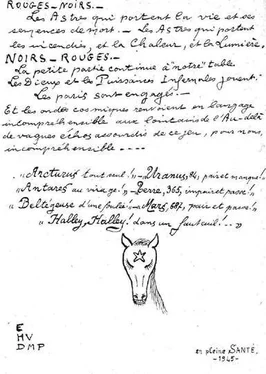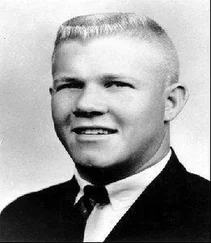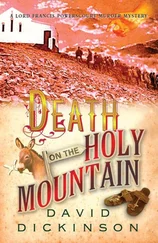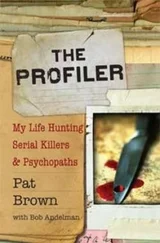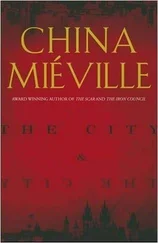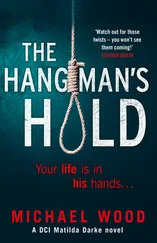In the story that later emerged, Kahan not only found the Wolffs a room in her apartment building at 10 rue Pasquier, but also told them about Dr. Eugène, who helped people leave Occupied Paris. She knew of his operation because she, too, she said, hoped to flee. A meeting was arranged with the help of Kahan’s doctor and likely lover, Dr. Louis-Théophile Saint-Pierre, who in turn put her in touch with one of his patients, a pimp who worked several Montmartre bars, known variously as Robert or Henri le Marseillais (real name Henri Guintrand). This man introduced her to the actor and agency intermediary Edmond Pintard.
At a café in the Place de la Madeleine, Pintard met Kahan and then led her to a nearby hair salon. Dr. Eugène arrived ten minutes later and offered to take all three members of the Wolff family, making an exception to his rule of two at a time, probably because of the age of the mother-in-law. When he learned the price that Pintard had quoted (and arbitrarily doubled), he berated the makeup artist, threatening to end their working relationship. Apparently charmed by Kahan, the physician tried to recruit her for his organization. “We always need a woman like you,” he reportedly told her, offering her a commission for helping people escape and a promise, in turn, to arrange her journey later out of Occupied Paris.
The following day, Dr. Eugène met with the Wolff family in a room at Kahan’s apartment building. After a pleasant conversation about the arts, over tea, the Wolffs had been impressed with the physician, who had seemed, in the words of their lawyer, Jacques Bernays, “a man of vast culture and fine sentiments, whose magnanimity and character fully explained his devotion to the noble cause of clandestine passages.” Dr. Eugène told them to bring no papers, clothing, or anything that would reveal their identity. Valuables were to be packed in two suitcases or sewn inside their clothing. Maurice Wolff concealed a number of diamonds and other jewels in the shoulders of his jacket. The stakes were high. A single mistake would mean, the doctor said, “twelve bullets in my carcass” and “perhaps worse” for them.
In late December 1942, an old horse-drawn carriage pulled up to the entrance to Kahan’s building. The driver, an old man with an old-fashioned top hat and baggy winter coat a few sizes too large, put the Wolffs’ suitcases on the cart and opened the door for them. The carriage headed toward Place St. Augustine and then on to rue Boetie, Champs-Élysées, and L’Étoile. After turning onto Avenue Foch and then onto a side street, it stopped at the carriage entrance to No. 21 rue Le Sueur. The Wolffs entered the mansion, hoping to depart for South America.
Within two weeks, three additional couples who had recently arrived in Paris would follow the Wolffs, seeking the help of Dr. Eugène: Gilbert Basch (alias Baston), a twenty-eight-year-old former cosmetics executive in Amsterdam, and his twenty-four-year-old wife, Marie-Anne Servais Basch; Marie-Anne’s parents, Chaïm Schonker, another perfume executive, and his wife Franciska Ehrenreich Schonker, who lived in Nice (aliases included Stevens and Eemens); and Marie-Anne’s sister, Ludwika Holländer Arnsberg and her husband, Ludwig Israel Arnsberg (alias Schepers and Anspach). By January 1943, there had been at least nine people, using about a dozen pseudonyms, sent by Kahan to Dr. Eugène. All of them were wealthy Jews. None of them would be seen or heard from again.
Not long after helping the Wolffs, Ilse Gang told Massu, a woman with reddish-blond hair wearing dark sunglasses came by her apartment to inform her of the Wolff family’s safe arrival in South America and asked her if she wanted to follow them through the escape network. She had declined.
19.
THE LIST
ALWAYS THE SAME PROCEDURE, ALWAYS THE SAME MEANS.
—Pierre Dupin, avocat général
WHO was this woman who sent Dr. Petiot nine Jews in fifteen days at the end of 1942 and early 1943? An anonymous letter to Commissaire Massu from Auxerre, dated March 26, 1944, claimed that she, “doctoress Iriane,” worked as a recruiter arranging passage out of Paris for a commission and, moreover, earned twice the rate for every woman she recruited.
Massu sent detectives to question Kahan. But when they arrived at her apartment on the fourth floor at 10 rue Pasquier, which runs into the rue des Mathurins where Raoul Fourrier had his hair salon, Kahan was nowhere to be found.
A number of her neighbors spoke to the police, but insight into her possible motives remained elusive. Arriving in Paris in 1927, Kahan had worked at various times as a masseuse, a singer, and then as a medical assistant. Some thought that she seemed poor; others believed that she was a bohemian enjoying a comfortable lifestyle with money deriving from an unknown source.
Louise Nicholas, who had known her since she sang in cabarets in Montmartre, told the police that Kahan had a close friend in the German army. Actually, this man, thirty-seven-year-old Herbert Welsing, was a junior officer in the Luftwaffe. When he was interviewed in April 1944, Welsing had little to say, other than to claim that he did not know that Kahan was Jewish or involved in any clandestine organization.
Kahan’s landlady, Fernande Goux, had met her in the spring of 1942 at the nearby Georgette Bar. Within months, Kahan had moved into a small two-room apartment on the sixth floor of her building, though she soon exchanged this for a larger flat on the fourth floor. It was about March 20, 1944, Goux said, that Kahan had abruptly moved out of her building.
No one would admit knowing where she went. No one, either, would acknowledge hearing anything to suggest that Kahan had worked for an escape organization; the penalty for this illegal activity, after all, could be death. The trail for the moment went cold.
On April 12, Massu and Battut drafted a list of probable victims of Dr. Petiot. There were now seventeen:
Joachim Guschinow
Jean-Marc Van Bever
Marthe Fortin (Khaït)
Denise Hotin
Annette Basset, or “Annette Petit”
Joseph Réocreux, “Jo the Boxer”
Lina Braun (Wolff)
Rachel Marx (Wolff)
Maurice Wolff
Charles Lombard
Joséphine Grippay
Adrien Estébétéguy, “The Basque”
Gisèle Rossmy
Joseph Piereschi, “Zé”
Yvan Dreyfus
Claudia Chamoux
François Albertini, “The Corsican”
Charles Lombard, number ten on this list, was actually soon removed. A thirty-nine-year-old gangster notorious for committing robberies as an impersonated police officer, Lombard had disappeared in March 1943. His wife, Marie, feared that he had, like his friend Adrien the Basque, contacted Dr. Petiot in an attempt to leave for Buenos Aires. But police soon learned that Lombard was alive and well, flourishing in the criminal underworld. He would surface in Turin after the war, apparently trying to find a ship to flee to South America.
Three of the victims sent by Kahan, the members of the Wolff family, had been added to the list. The police had found their names in a suitcase from Neuhausen’s attic. Within a month, Kahan’s other six recruits would be added as well. A number of invoices from the company Wagons-lits Cook had been found in the suitcases, bearing the names, or rather the aliases, of the Schonker and Arnsberg families. The list of probable victims was now at twenty-two.
BY May 1944, the rapid movements on the Eastern and Southern fronts dominated the front pages. After conquering the Crimean peninsula in a six-day campaign, seizing 24,000 prisoners, and inflicting some 110,000 casualties, the Soviet Red Army thrust forward into Romania, consolidating its hold over the strategic plateau that held Europe’s largest oil supply, which was desperately needed by the Third Reich. Only 140 miles away, some 448 U.S. Flying Fortresses and Liberators of the Fifteenth Army Air Force pounded the oil fields at Ploesti and then Bucharest itself. Everywhere, it seemed, the Nazis were engaging in what the controlled press called “strategic retreats.”
Читать дальше
